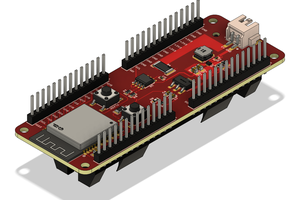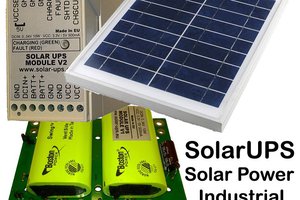Introduction
In recent years, there has been a major advance in the area of embedded systems through the use of portable devices applied in various areas of monitoring with IoT (Internet of Things). These devices play a fundamental role in our lives, offering real-time monitoring of machine conditions, weather conditions, road monitoring and many other functionalities.
However, the growth in the use of these devices has also brought to light a significant challenge: energy consumption. As the application of these devices increases, so does the demand for solutions that extend battery life and reduce the need for frequent battery changes or recharges. In this context, developing low-power portable devices powered by batteries has become a priority for manufacturers and developers.
This article aims to present some fundamental circuits and techniques for the efficient development of portable devices with batteries that operate with low energy consumption. Throughout the next sections, we will discuss the importance of intelligent energy management and battery efficiency, some electronic circuits for use with batteries, as well as strategies for monitoring battery energy consumption in real time.
By understanding and implementing these strategies, developers can not only create more sustainable and cost-effective devices, but also deliver an improved and more reliable user experience.
This article will be divided into 3 topics:
- The main batteries used in IoT;
- DC-DC voltage converter circuits to operate with batteries;
- Battery charge monitoring circuits for real-time monitoring of consumption.
Devices for the Internet of Things powered by batteries
Battery-powered Internet of Things (IoT) devices with a focus on low energy consumption are essential to ensuring the efficiency and longevity of operations. These devices are designed to maximize battery life, enabling continuous, reliable operation over long periods.
The key to the success of these devices lies in the combination of hardware and software components optimized for minimal power consumption. This includes the careful choice of low-power sensors, efficient processors, intelligent power management strategies and advanced programming techniques for controlling the CHIP's peripheral circuits.
These devices find application in a variety of scenarios, from monitoring environmental conditions to asset tracking and connected health. By offering an energy-efficient solution, they not only reduce operational costs but also contribute to environmental sustainability, enabling broader and more effective adoption of IoT across diverse industries.
To carry out the electrical supply process, there are different types of batteries that are used. Below, we will highlight the most used types on the market.
Types of Batteries for IoT Applications
The types of batteries most commonly used in IoT devices are those that strike a balance between energy density, size, weight, and longevity. Below we have some types of batteries commonly used in the applications:
Lithium polymer (Li-Po) batteries
Li-Po batteries are a variation of Li-ion batteries, known for their flexibility and thin profile. They are often used in IoT devices with unique form factors or space constraints, such as wearable gadgets and small-scale sensors.
Lithium-ion (Li-ion) batteries
These batteries offer high energy density and a long lifespan, making them ideal for small IoT devices that require reliable power over an extended period. They are commonly found in wearable technology, smart home devices, and remote sensors.
Coin cell batteries
Coin cell batteries, such as those using lithium chemistry (e.g., CR2032), are commonly used in small, low-power IoT devices like temperature sensors, key finders, and small trackers. While they have limited capacity, they are compact and cost-effective for applications that don't require frequent battery replacement.
Alkaline Batteries
These are...
Read more » Silícios Lab
Silícios Lab





 Kumar, Abhishek
Kumar, Abhishek
 Gabor Futo
Gabor Futo